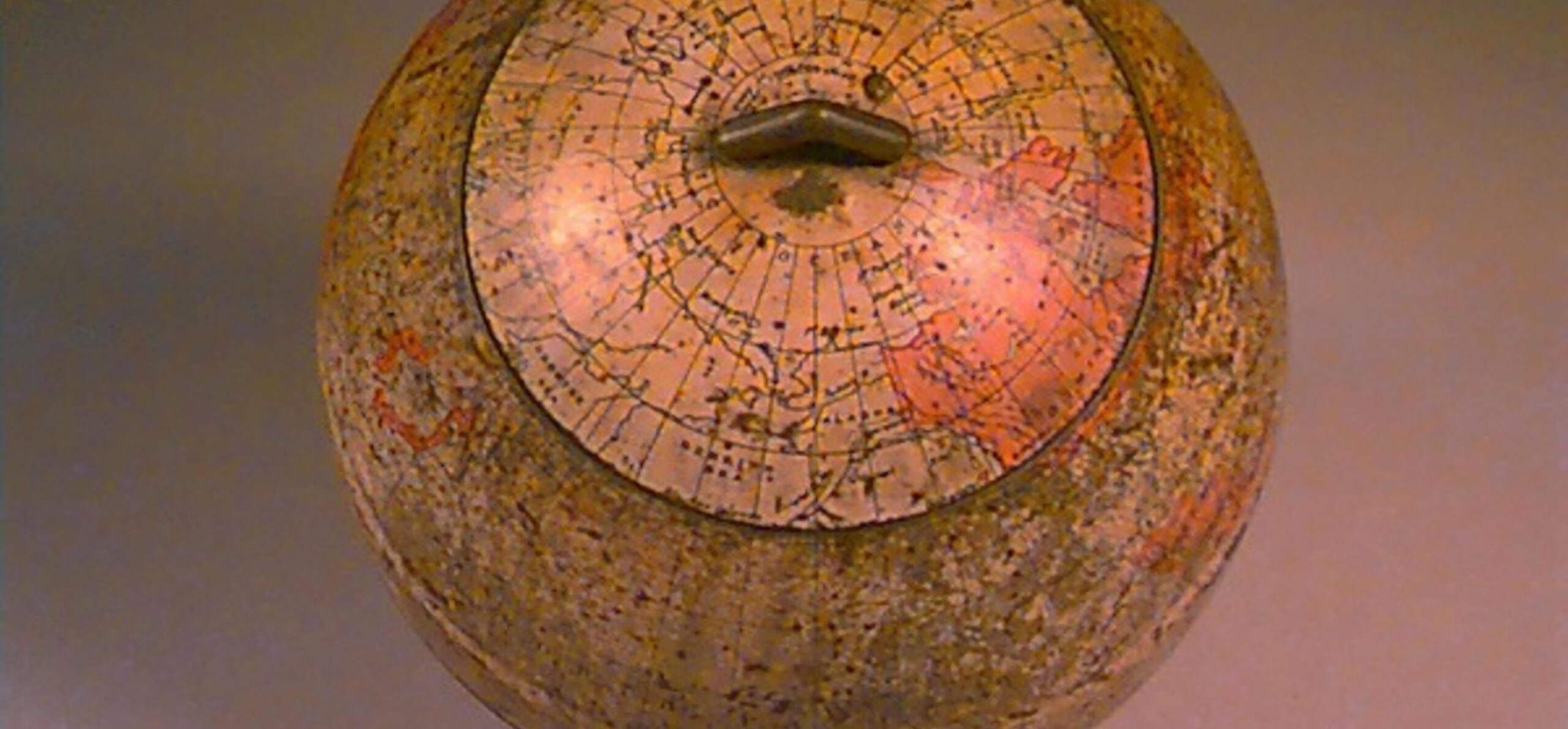As biscuits became a more affordable item and sales increased, weighing the biscuits into paper bags became less popular with shopkeepers as it was very time-consuming. In 1905 Huntley & Palmers sold Breakfast biscuits to home customers in paper packets for the first time. By 1914 they were selling 5 ½ million packets per year.
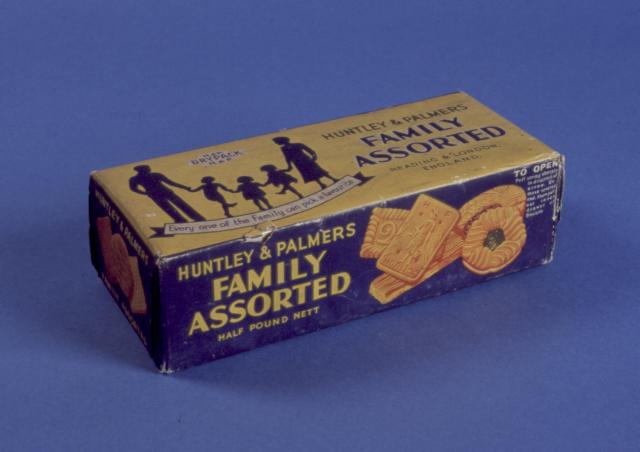
At the beginning of the twentieth century, decorated biscuit tins were still an expensive commodity. This is a prototype of a 'dry pack' and has UK Patent No. 426586, Union Patent No. 759/34 inscribed on it. (REDMG : 1992.2.1084)
Price of tins
Biscuit companies reduced their costs by reusing tin shapes with new images. The tin on the left was the third in a series of tins to use the same locket shape. The price of a tin reflected the amount of work that went into its manufacture. The price was influenced by the cost of the design, the shape, whether hinges or locks were needed and the amount of soldering required.
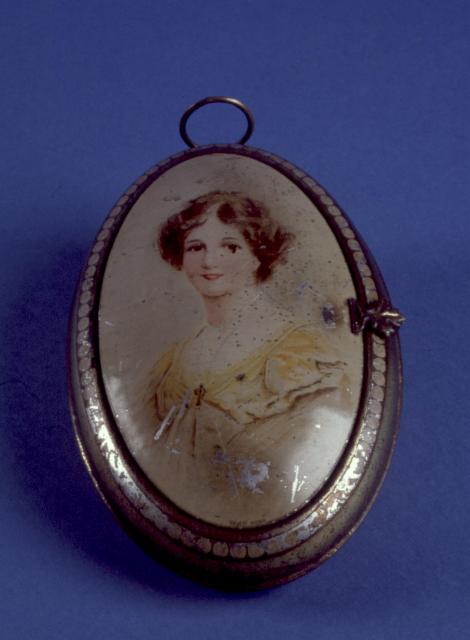
This shape was first used for 'Buhl', issued in 1907 and 'Cloisonne' issued in 1908. This tin varied slightly as the border is of simulated pearls. Manufactured by Huntley Boorne & Stevens using offset litho. (REDMG : 1992.2.1288)
The First World War
During World War I the production of fancy tins decreased drastically from 518,000 in 1913 to 200,000 in 1915. Whilst this was caused in part by a lack of demand, Huntley, Boorne & Stevens were also busy manufacturing goods for the War Office including 536,000 water bottles and more than 6 million detonators.
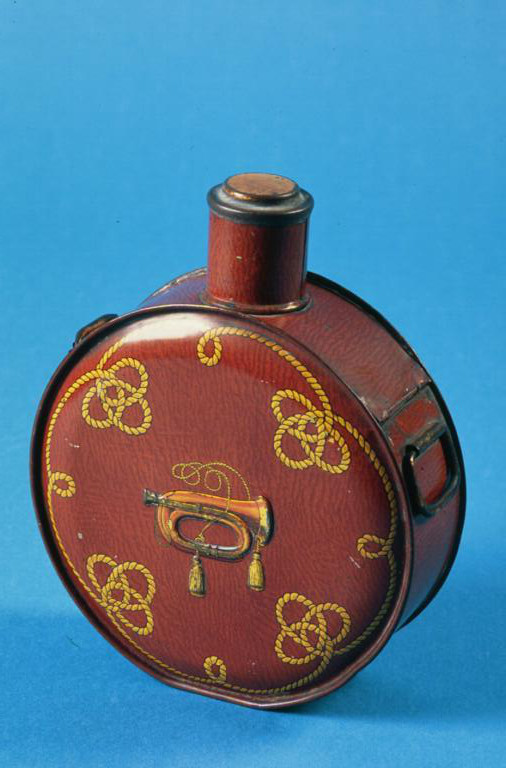
This tin, released at Christmas in 1915, was one of the few new designs to be produced during the First World War. (REDMG : 1997.79.70)
Sentry tin
This sentry tin was first designed in 1909 when it featured a German soldier. In 1913 the tin was redesigned with a Belgian soldier in his place. This was a patriotic gesture from the Reading firm at a time when Britain's relationship with Germany was becoming increasing insecure. Some earlier versions of the tin have been found with the sentry defaced.
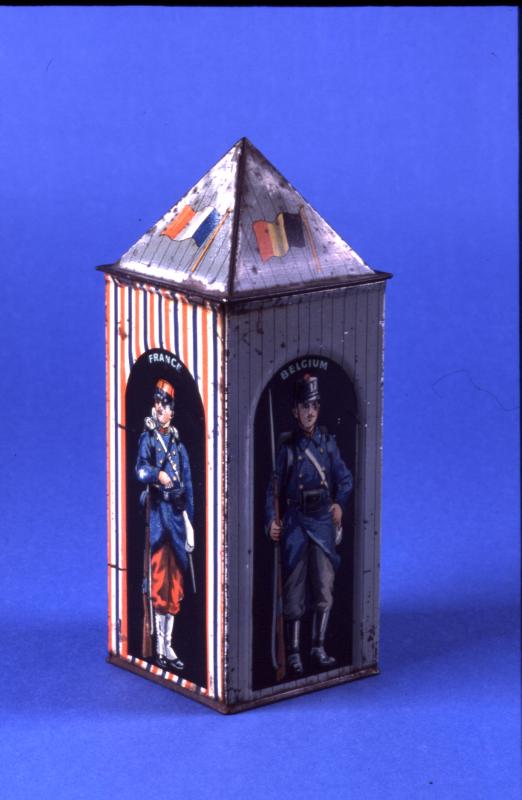
This tin was sold in 1910 for sixpence. It was manufactured by Huntley Boorne & Stevens using offset litho and embossing. (REDMG : 1992.2.219)
The next section explores Huntley & Palmers' tins between the First and Second World Wars.
